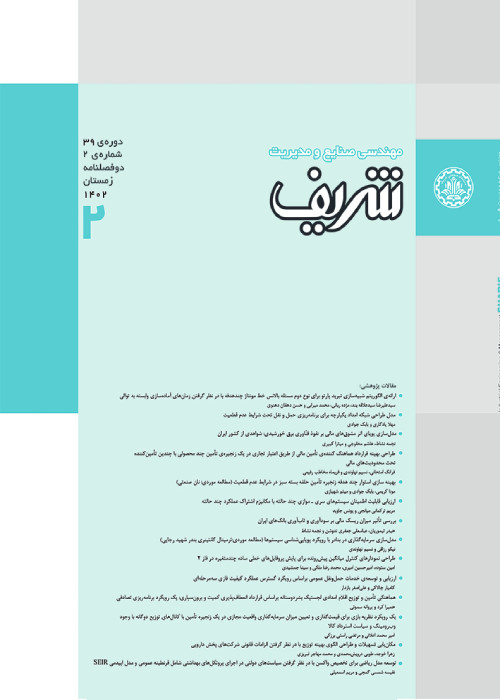TWO-STAGE STOCHASTIC PROGRAMMING MODEL FOR LOCATION OF COLLECTION CENTERS IN GREEN LOGISTICS NETWORKS
In the recent decades, environmental concerns have been attracted more attentions of researchers because of hazardous e ects that create by logistics networks on the human's environment. Nowadays, customers are interested in products that are amicable with environment and can be recovered. Therefore, manufacturers are forced by customers not only to supply environmentally amicable products but also to be responsible for the returned products. On the other hand, natural and political conditions (e.g., natural disaster, disease, sanctions and wars) cause risk and indemnify the structure of logistic networks. The risks can be could be divided in two groups. Internal risks (e.g., delay, interrupt and failure) can be controlled by the prediction of managers; however, external risk (e.g., ood, earthquake and thunder) cannot be controlled by managers. Hence, in this paper, we develop a two-stage stochastic model for an integrated forward/reverse logistics network with eight echelons considering risk and environmental conditions. Three echelons in forward logistics (i.e., suppliers, plants and distribution centers) and four echelons in revers logistics (i.e., collection centers, repairing centers, dismantle centers and disposal centers). First, a deterministic mixed-integer linear programming (MILP) model is developed for the integrated logistics network to avoid sub-optimality caused by the separated design of the forward and revers networks. Then, the two-stage stochastic model of the presented MILP model is developed by using a scenario-based approach. After that we analyze the e ect of changes in demand of customers in both deterministic and stochastic models and compare them in each scenarios. Both models have been solved by GAMS software considering each scenarios. Furthermore, he numerical results show that the stochastic model can handle the uncertainty data as well and both models can be feasible for all scenarios. Finally, the conclusion is provided. We can consider multiple periods, pricing, routing and other meta-heuristic algorithms in the represented model for future studies.
- حق عضویت دریافتی صرف حمایت از نشریات عضو و نگهداری، تکمیل و توسعه مگیران میشود.
- پرداخت حق اشتراک و دانلود مقالات اجازه بازنشر آن در سایر رسانههای چاپی و دیجیتال را به کاربر نمیدهد.


